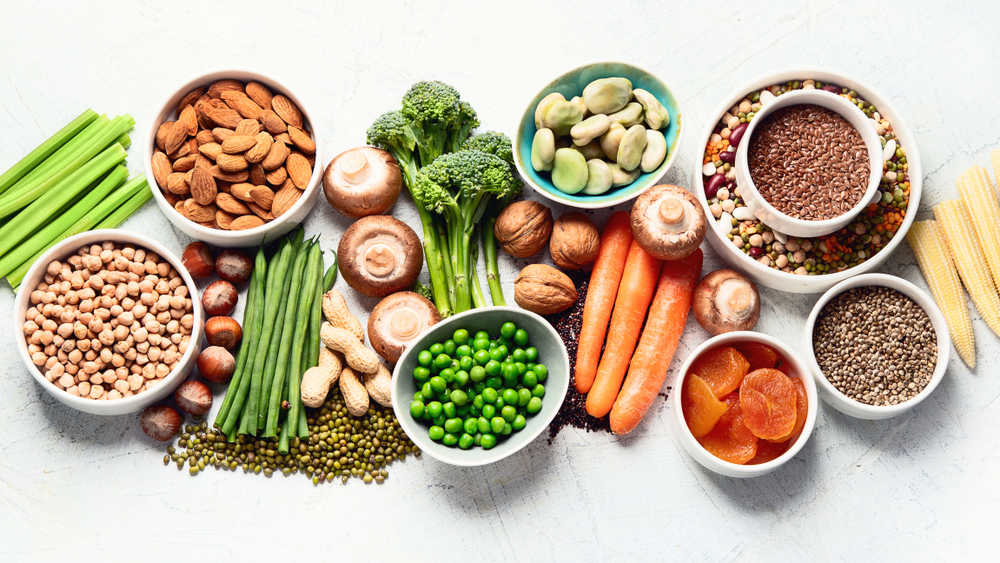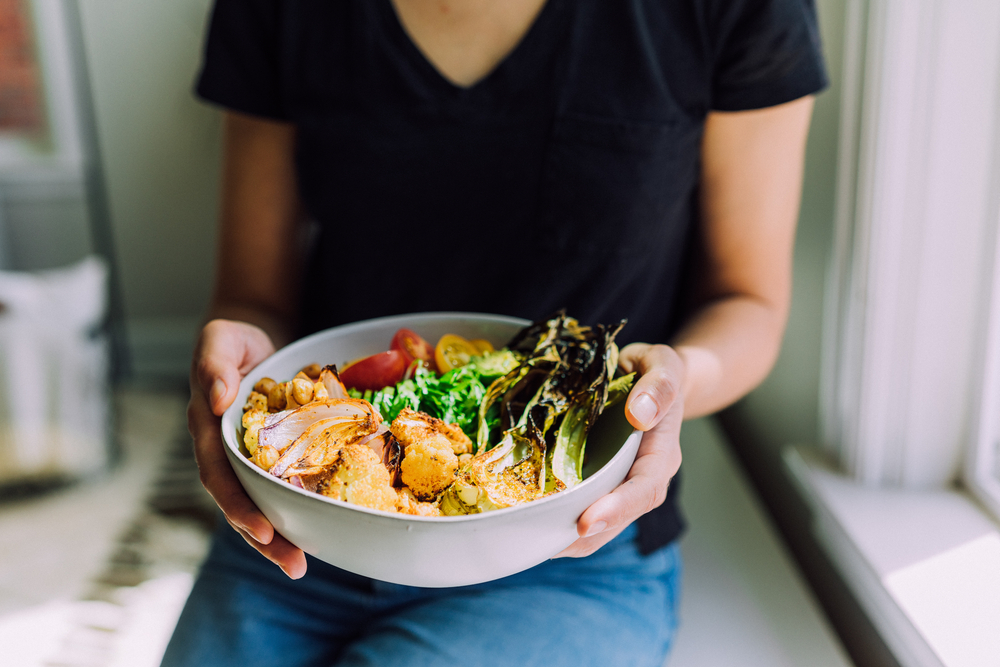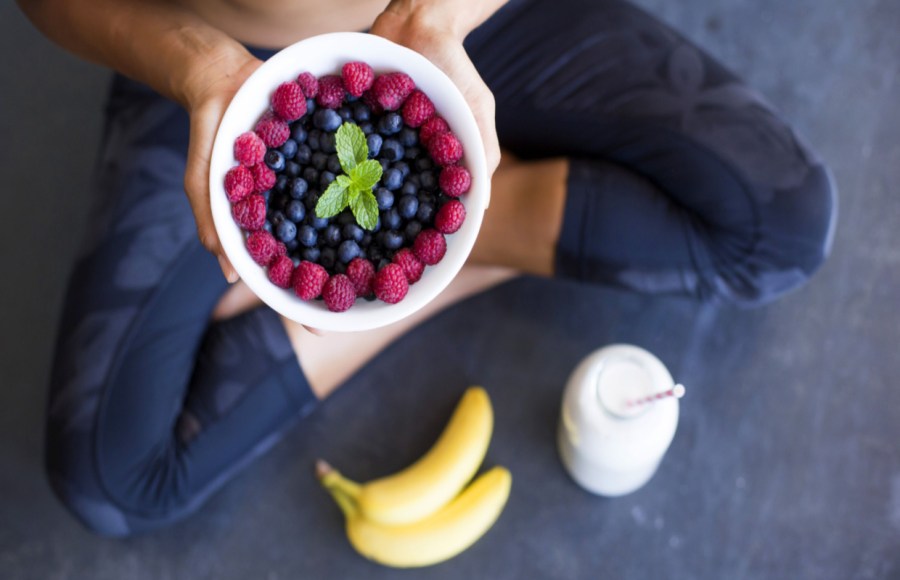Whatever your choice of exercise, the right diet is essential to help you maintain the energy you need to commit to a programme and also to effectively reach your weight-loss goals. In dietary terms, yoga is influenced by Ayurveda – the traditional Indian system of medicine. Boost your energy, cleanse your body and aid weight loss by following the yogic diet plan – discover the health benefits, which foods to eat and which ones to avoid…
What is the yogic diet?
Both yoga and Ayruveda teach that all of existence – including humans, animals, land and food – originate in the interaction of three primal energies, known as ‘gunas’. These three energies are rajas (energetic), tamas (static) and sattvas (harmonious and balanced). When it comes to diet, yogis believe all food has one of these energies dominant within it. They put foods into three categories:
What are the types of yoga foods?
- Sattvic: Yogis believe these foods encourage a light, agile body and mind plus a steady flow of energy and advise practitioners to eat plenty of them. Sattvic foods include pure, wholesome – usually vegetarian – foods, such as pulses, vegetables, herbs, fruit, nuts, seeds, wholegrain bread and cereals, plus water, and all dairy products.
- Tamasic: These are considered rich and heavy and yogis advise consuming them in small quantities. Tamasic foods include meat, alcohol, junk food and overly ripe or sugary foods.
- Rajasic: These spicy, hot, bitter or sour tastes are seen as over- stimulating and not conducive to a peaceful state in which to practise. Rajasic foods include coffee, tea, chocolate, salt, eggs, chilli peppers and strong spices.

How to follow a yogic diet plan
Generally speaking, a yogic diet plan is a nutritionist’s dream, and though some of the terms above might sound complicated, it’s really a well-balanced diet that can promote weight loss if you follow these simple principles.
Choose foods that are in their natural state
Make fresh fruit, raw or lightly steamed or stir-fried vegetables, pulses, unrefined wholegrains, nuts and seeds the staples of your diet. With vegetables and fruit, eat organic and local if you can, so you can benefit from recently picked produce with high nutrient values.
Avoid processed foods
In yoga, food has ‘prana’ or energy (prana is one of the words used for breath but also refers to the energy flowing through living things).
Processed foods have low prana and can affect our energy levels, making us tired and sluggish –
and they can lead to weight gain. These include anything made with white flour or sugar, takeaways and high-salt foods, as well as packaged products with long ingredient lists!
Opt for natural sweeteners
It’s not off limits to have the odd treat here and there, but yogis sweeten their foods naturally, such as with honey and molasses. They also use an abundance of naturally sweet, delicious spices, including cinnamon, cardamom, mint, ginger and fennel.
Keep your caffeine levels to a minimum
Yogis like to generate their energy through yoga and breathing and caffeinated beverages are seen as ‘rajasic’ or overstimulating. If you’re trying to lose weight, it’s helpful to cut down on tea and coffee (or cut it out completely) as caffeine can cause false hunger and a crash in your blood sugar that could wreak havoc on energy levels and cause sweet or salt cravings.

Cut down on meat and animal products
The yogic diet is lacto-vegetarian, which means it’s made up of non-animal foods, with the exception of milk, cheese, yoghurt, butter and honey. This suits the yogic priniciple of non-violence, or ‘ahimsa’, to all living things.
But there’s no need to be vegetarian to practise yoga – especially if you’re just aiming to get a little fitter, rather than have a full yogic lifestyle overhaul! You may choose to have small portions of lean meat, chicken, fish and eggs regularly, especially as these keep you satisfied between meals.
Don’t eat too much!
The yogic diet is all about moderation. One of yoga’s key philosophical texts, the Bhagavad Gita says: ‘Yoga is not for those who overeat, nor for those who fast excessively.’ In fact, yogis believe we should eat only until we are around 80 per cent full to maintain good digestion, leaving the stomach around a quarter empty.
Try eating around 80 per cent of what’s on your plate, then waiting – easier said than done? But it takes around 12 minutes for the stomach to register fullness, so you might be more sated than you think!
Yogic diet plan: foods to eat
- Lentils, beans, peas of all kinds
- Nuts and seeds – raw
- Wholegrains, such as oats, quinoa, buckwheat and wild or brown rice
- All vegetables, except onions and garlic
- All fruits
- Natural raw sweeteners, including raw honey, maple syrup and molasses
- Natural, unrefined oils including olive, sesame, coconut and sunflower, plus ghee and butter
- Dairy foods, including yoghurt, milk and cheese
- Herbal teas
- Sweet spices such as cinnamon, turmeric, cumin, fennel and mint
- Pure water
- Freshly pressed vegetable and fruit juices

Yogic diet plan: foods to avoid
- Processed foods
- High-salt foods
- High-sugar foods
- Takeaways
- Animal fats and meats
- Fried foods
- Caffeine
- White-flour products, such as refined breads
- Soft drinks
- Packaged juices







